Body Procedures
Perspiration Reduction
Also known as hyperhidrosis or sweat reduction
Excessive sweating can be an embarrassing medical condition that affects your personal and professional life, making it difficult to engage with others, perform certain tasks and wear certain types of clothing. While treatment for this condition can involve medications, prescription antiperspirant and even surgery, many have found botulinum toxin injections and laser therapy to be effective, minimally invasive and long-lasting treatments.
When to Consider Perspiration Reduction
- If you feel self-conscious and alter your behavior or dress consistently to accommodate your sweating
- If you have trouble gripping objects securely (like a knife or musical instrument)
- If you change your clothing and socks several times a day
- If you’ve ever felt or been dehydrated from excessive sweating
Pros
- Makes you feel more comfortable in professional or social situations
- Able to grasp objects securely without fear of losing grip
- No longer have to frequently change clothes or limit wardrobe
Cons
- Botulinum toxin injections may need to be repeated every seven months to two years
- Laser treatments are permanent but could require follow-ups
- Some treatments only work on certain parts of the body (such as the armpits)
These are the top three pros and cons to weigh when considering perspiration reduction. If you wish to focus on what is unique to you, please consult with your aesthetic plastic surgeon.
Are you a good candidate for a perspiration reduction?
The following are some common reasons why you may want to consider perspiration reduction:
- You feel self-conscious and alter your behavior or dress consistently to accommodate your sweating
- You have limited your lifestyle choices because of excessive sweating
- You have trouble gripping objects securely (like a knife or musical instrument)
- You change your clothing and socks several times a day
- You’ve ever felt or been dehydrated from excessive sweating
If you are in good general health, have a positive attitude and realistic expectations, you are most likely a good candidate for this procedure.
Detailed Procedural Info
There are solutions that can reduce perspiration ranging from oral and topical medications to procedures that block or disable sweat glands. Major surgery that removes or cuts the spinal nerves that control sweating is not usually suggested unless other, more conservative methods are explored. Below are some common methods for treating hyperhidrosis:
Prescription antiperspirant and oral medications can reduce sweating overall and can help alleviate some of the more pervasive issues.
Botulinum toxin injections block the nerve’s control of the sweat glands and are most commonly used to treat axillary hyperhidrosis or excessive underarm sweating, but can also be used to treat the hands, face and feet. Your plastic surgeon may make anywhere from twenty to fifty injections for underarm treatments.
What are my options?
Here are some brands you might hear mentioned when discussing perspiration reduction options:
Botulinum toxin injections
- Botox
What will my perspiration reduction incisions and scars be like?
Surgical treatments such as laser ablation and axillary shaving require one to two small incisions that will often result in a minimal scar that is virtually unnoticeable. Nonsurgical treatments including injections, electrical currents, microwave energy, and oral or topical medications do not require any incisions.
Selecting a Surgeon
It’s important to choose your surgeon based on:
- Education, training, and certification
- Experience with perspiration reduction treatment
- Your comfort level with him or her
After finding a board-certified plastic surgeon in your area who is experienced in performing perspiration reduction treatment, you will need to make an office appointment to set up your consultation. Generally, because of the in-depth nature of the consultation, there is a cost associated with the initial visit.
Your initial consultation appointment
During your initial consultation, you will have the opportunity to discuss your cosmetic goals. Your surgeon will evaluate you as a candidate for perspiration reduction and clarify what perspiration reduction can do for you. Understanding your goals and medical condition, both alternative and additional treatments may be considered.
You should come to the consultation prepared to discuss your complete medical history. This will include information about:
- Previous surgeries
- Past and present medical conditions
- Allergies and current medications
- It is very important to disclose the recent or chronic use of NSAIDS like aspirin, ibuprofen (Advil or Aleve), anticoagulants or blood thinners
Your treatment plan
Based on your goals, physical characteristics, and the surgeon’s training and experience, your surgeon will share recommendations and information with you, including:
- An approach to your treatment, including the type of procedure or combination of procedures
- The outcomes that you can anticipate
- Your financial investment in the procedure
- Associated risks and complications
- Options for anesthesia and treatment location
- What you need to prepare for your treatment
- What you can expect to experience after treatment
- Show before-and-after photos of cases similar to yours and answer any questions
Questions to ask your aesthetic plastic surgeon
For a general list of questions to ask your surgeon about his or her background, find out about plastic surgery safety, and to plan your procedure. We developed these questions to help you:
- Make the most informed and intelligent decisions about your procedure
- Confirm that you have the right surgeon for your procedure
- Make your initial consultation as rewarding as possible
- Understand your options, potential outcomes, and risks
It is important for you to take an active role in your treatment, so please use this list of questions as a starting point for your initial consultation.
- Am I a good candidate for perspiration reduction?
- Are the results I am seeking reasonable and realistic?
- Do you have testimonials regarding the procedure I am having?
- Will my scars be visible? Where will my scars be located?
- What kind of anesthesia do you recommend for me?
- What will be the costs associated with my treatment?
- What will you expect of me to get the best results?
- What kind of recovery period can I expect, and when can I resume normal activities?
- What are the risks and complications associated with my procedure?
- How are complications handled?
- What are my options is this procedure does not meet the goals we agreed on?
Preparing for Your Procedure
Your surgeon will provide you with pretreatment instructions, answer any questions that you may have, take a detailed medical history, and perform a physical exam to determine your fitness for treatment.
In advance of your procedure, your surgeon may ask you to:
- Stop smoking at least six weeks before undergoing surgery to promote better healing.
- Avoid taking aspirin, certain anti-inflammatory drugs, and some herbal medications can cause complications.
- Discontinue any topical skin products that might increase your risk of complications from treatment.
- Regardless of the type of surgery to be performed, hydration is very important before and after surgery for safe recovery.
Perspiration reduction is usually performed on an outpatient basis. Some treatments may result in discomfort afterwards and may require someone to transport you home.
What can I expect on the day of my perspiration reduction procedure?
Most perspiration reduction procedures are performed in an accredited hospital, free-standing ambulatory facility, or office-based surgical suite. Upon your arrival, your surgeon or his or her office staff may:
- Offer you a topical numbing agent
- Clean the area to be treated with alcohol
- Perform an iodine starch test or other test to determine the affected area
- Mark the areas most affected by excessive sweating
Following this preparation, your aesthetic plastic surgeon will follow a predetermined course of treatment, whether it is nonsurgical or surgical. You will most likely be awake during the procedure and be observed for a period of time afterwards until it is safe for you to go home.
Aftercare and Recovery
Treatment for hyperhidrosis can range from very little downtime to a couple of weeks of recovery. Your surgeon will discuss whether there are any immediate restrictions on your activities and if so, how long it will be before you can return to your normal level of activity.
After treatment, you and your caregiver will receive detailed instructions about the care of the treated areas, including information about:
- Normal symptoms you will experience
- Potential signs of complications
Be sure to read all materials given to you and be prepared to follow aftercare instructions to have a quick and hassle-free recovery. It is important to realize that the amount of time it takes for recovery varies greatly among individuals. If you experience extreme or long-lasting pain or redness and swelling after treatment, contact your surgeon to find out these are normal or a sign of a problem.
Recovery time frame
These are general healing and recovery guidelines for the following procedures:
Botulinum toxin injections
You may experience temporary swelling and redness in the injection sites. While numbing cream and ice may be used beforehand, post-treatment is not necessary. You may resume normal activities immediately afterwards, but excessive exercise and sweating should be avoided for the first twenty-four to forty-eight hours.
How Long Will the Results Last?
Results usually vary from person to person, but these general guidelines apply for the following treatments:
Botulinum toxin injections: Shots are needed every six months to two years.
Maintain a relationship with your aesthetic plastic surgeon
For safety, as well as the most beautiful and healthy outcome, it’s important to return to your plastic surgeon’s office for follow-up evaluation at prescribed times and whenever you notice increased sweating. Do not hesitate to contact your surgeon when you have any questions or concerns.
Associated Costs
The cost of perspiration reduction varies from doctor to doctor and from one geographic area to another. The type of treatment and number and location of the areas to be treated also affects the cost.
Because perspiration reduction is elective surgery, insurance usually does not cover these costs. However, if you are greatly inhibited by excessive sweating, some insurance plans might cover some or all of your treatment. Otherwise, many surgeons offer patient financing plans to make the procedure more affordable.
Choose your surgeon based on quality, training, and experience—not cost.
Limitations and Risks
Fortunately, significant complications from perspiration reduction treatment are infrequent. Your specific risks for will be discussed during your consultation.
All procedures have some degree of risk. Some of the potential complications of all are:
- Adverse reaction to anesthesia
- Hematoma or seroma (an accumulation of blood or fluid under the skin that may require removal)
- Infection and bleeding
- Changes in sensation
Scarring
- Allergic reactions
- Damage to underlying structures
- Unsatisfactory results that may necessitate additional procedures
You can help minimize certain risks by following the advice and instructions of your board-certified plastic surgeon, both before and after your perspiration reduction procedure.
Harake Plastic Surgery
Dr. Mazen Harake
1050 Wilshire Drive
Suite 100
Troy, Michigan 48084

